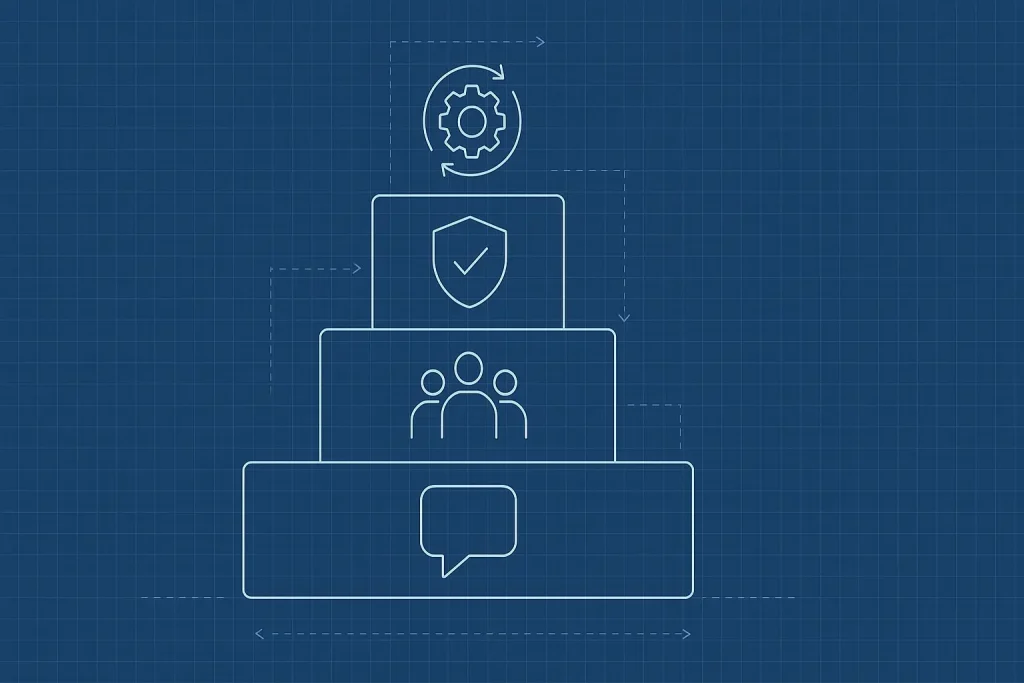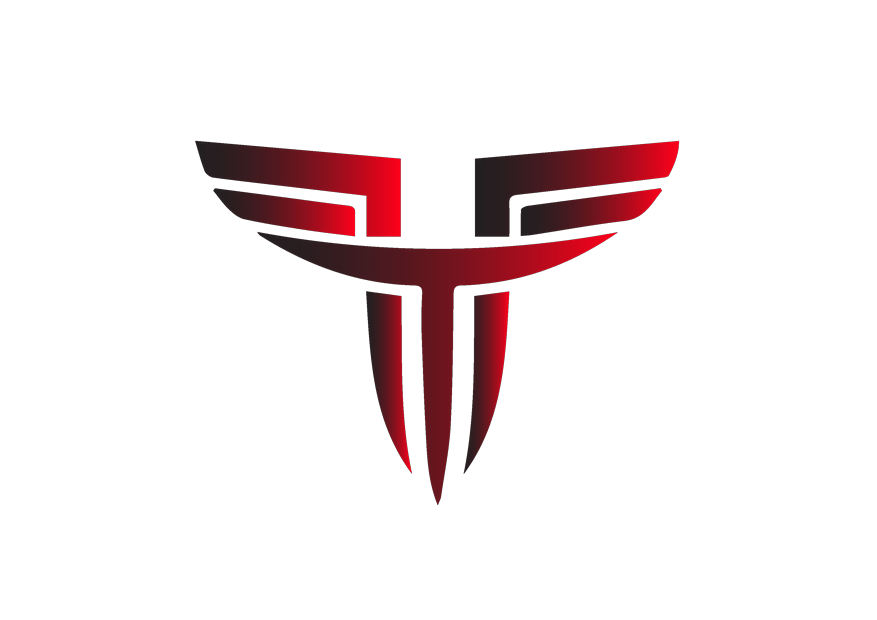More leads are hiding in your basics than in your next big idea.
Because when teams chase trends without a base, they ship noise. When they invest in a B2B marketing foundation, they create momentum. Today is about the base. The unsexy work that quietly multiplies every channel you touch. If you came here for the shiny tactic, you will leave with a system that makes any tactic pay off.

Coverage map of source ideas, then the upgrade
First, a quick map of the core ideas we are elevating and expanding:
- Random acts of marketing waste time. Trend chasing without a plan usually loses to brands that repeat one story well.
- Foundation first. Decide what you stand for, who you serve, and how you will say it, then repeat everywhere.
- Message “well”. Create a shared language and enforce it so your brand sounds like one clear voice across channels.
- Scaffolding. One spark becomes a surround-sound experience with connected touchpoints before, during, and after a moment.
- Practical research. You can survey people outside your list to validate ideas, features, and creative.
- Results with soul. Authenticity is not performance art. It starts with knowing what customers want and being okay with not trying to be cool.
Next, I will turn those sparks into a working system a small team can run. The goal is simple, repeatable outcomes. Not more content, more clarity.
Start with a B2B marketing foundation, not a flurry of tactics
A strong B2B marketing foundation is the engine room. It aligns message, audience, proof, and plays before a single ad goes live. Too many teams start with channels, then backfill the why. That is why campaigns feel busy, not effective. It is also why creative looks different every quarter, and why sales says marketing sounds different on every call.
Instead, anchor the base. Write down the promise you can defend, the pain you will remove, and the proof that makes buyers trust you. Then decide the minimum set of plays you will run every month. Finally, decide what you will not do. The no list protects the yes list.
Moreover, a clear base turns planning into a habit, not an event. It makes new hires faster, agencies easier to brief and leadership confident because the story is stable while the tactics flex. That is the real power of a B2B marketing foundation. It reduces creative whiplash and increases commercial focus.
Define the B2B marketing foundation: message, audience, proof, and plays
Your base needs four bricks. Keep them simple, visible, and hard to break.
1) Message
State your brand spine in one line. Problem, promise, payoff. Use customer words, not marketing words. Then extend it into a message house: three proof-backed pillars you will repeat for a year. Each pillar owns one measurable benefit your buyer cares about.
2) Audience
List the buying committee. Name the person, the job to be done, the blocker, and the trigger that moves them from curious to serious. For each role, write a one-paragraph value statement. Then confirm it with three calls per segment. Yes, talk to people.
3) Proof
Collect operator receipts. Screenshots, timelines, charts, quotes, and pre, during, after results. Because trust is built with receipts, not adjectives. Create a proof vault your whole team can use.
4) Plays
Choose the minimum marketable system. For example, one monthly narrative campaign, one weekly educational post, one customer proof drop, one offer test, and one partner motion. Fewer, better plays that you can sustain. Then name your kill rules in advance so you can stop politely and move budget with calm.
Therefore, when these four bricks lock together, your B2B marketing foundation gives every channel a job. It gives every asset a purpose. It gives your team focus.
Operationalize consistency with a message well
Consistency is not a vibe. It is a manual. Build a message well, a simple doc that says exactly how you talk about everything, so the brand sounds like one person in every room.
- Preferred vocabulary. If it is “straightforward,” do not say “intuitive.” Pick one word and honor it.
- Sentence rhythm. Short, punchy lines for headlines. Clear, complete sentences in body copy. Human voice throughout.
- Pillar statements. One definitive sentence per pillar and two proof bullets. Keep it tight.
- No list. Words you never use. Phrases you avoid. Promises you will not make.
- Anchor examples. Show a good paragraph and a bad paragraph. Teach by contrast.
Because everyone pulls from the same well, you earn memory. People recognize you faster. Sales decks stop drifting. Press quotes stop wobbling. Social posts echo the site. Over time, repetition turns into recognition, then preference. That is brand, the quiet compounder sitting under your pipeline.
Importantly, the message well is living. Update it when proof changes, not when taste changes. Discipline beats novelty here.
Scaffolding, turn one spark into an integrated marketing campaign
Good ideas are lonely without structure. Scaffolding gives them company. It surrounds one spark with touches that meet buyers where they actually are.
Before the moment
Set intent, audience, and message in your B2B marketing foundation, then plan the spine of the moment. Write the story, not the deliverables. Decide the one sentence you want prospects to repeat to their boss. Then pick the channels that will carry that sentence in.
During the moment
Pair the hero activation with education and proof. If you sponsor an event, publish a point of view tied to the theme. When you drop a report, host a small briefing for qualified accounts. If you launch a feature, partner with a customer and show the workflow, not just the feature.
After the moment
Do not go dark. Turn reactions into nurture, questions into a short FAQs, the deck into five posts or the demo into a how to. Then follow up with the people who engaged, not with a generic blast. Still, keep the story the same. Scaffolding is repetition with context.
Consequently, one spark works harder. You see deeper engagement, better recall, and cleaner handoffs to sales, because the story did not change midstream. That is integrated marketing done by humans with a calendar, not a factory with a quota.
Research without a research team
You do not need a giant panel or an expensive study to get real answers. You need clear questions, a sensible audience definition, and a plan to act on what you learn.
- Start with a decision. Write the specific choice you need to make. New tier pricing, feature order, headline angle, or partner priority.
- Define the sample. Which roles, which industries, which company sizes, and which regions. Keep it tight enough to be useful.
- Show, do not ask. Use images, flows, and copy variations so people can react to something real. Ask fewer, better questions.
- Add one open field. Steal their words for your copy. Customers title your chapters better than you do.
- Close the loop. Share what you learned with your team and adjust the message well if needed.
As a result, your next release reads like the market wrote it. Your next ad sounds like a mirror, not a megaphone. Your B2B marketing foundation gets sharper because it is fed by real language and real trade offs.
AI should power the base, not replace it
AI is a force multiplier when it sits on top of a clear base. It is a mess maker when it stands in for judgment. Use it to synthesize calls, to cluster themes, to draft variants you will edit with taste. Use it to make the proof vault searchable and to tag assets by pillar. Do not use it to set strategy or to decide what you believe. That is leadership work.
Moreover, AI makes it easier to ship more. The temptation is strong. Resist. Publish only what tightens the story, trains the market, or moves the next conversation forward. The rest is cost. Because position is built by focus, not volume.
Planning beats panic, how to decide what not to do
Great marketing is as much subtraction as it is creation. You will be asked to chase every spike. You will feel the itch to ride every headline. Create a decision rubric once, then follow it when the room gets loud.
- Cost to do vs cost not to do. If we skip this, what breaks. If we do it, what stops.
- Fit to foundation. Does it reinforce a pillar. Does it reach a priority audience.
- Shelf life. Will this still matter in a week. In a quarter.
- Proof path. Can we back it with receipts. Can we measure it without heroics.
- Scaffolding potential. Can we surround it before, during, and after.
However, a no can be a strategy. A no keeps your yes clean. A no protects your calendars, your teams, and your message well. Leaders earn trust when they say no for a reason that maps back to the B2B marketing foundation.
Measurement that connects brand to revenue
Brand is not vague. It is the compounding effect of being remembered for something useful. Tie that to revenue in a way your CFO respects.
- Leading signals. Direct traffic quality, branded search lift, view through assisted conversions, and reply rate on outbound that references your story.
- Mid funnel proof. Demo acceptance rate, sales cycle speed when a buyer consumes a pillar proof asset, and opportunity quality from warmed accounts.
- Lagging outcomes. Pipeline source mix, new logo CAC vs blended CAC, LTV to CAC, and NRR with accounts that engaged in your narrative campaigns.
- Attribution sanity. Use multi touch for direction and first or last touch for operations. Do not fight about perfection. Decide how you will decide.
Therefore, you can show how the B2B marketing foundation shortens time to trust and improves conversion at each step. When the story is stable, measurement gets cleaner.
Your 30 day plan to build your B2B marketing foundation
You do not need twelve weeks. You need four practical sprints.
Listen and distill
- Five customer calls per segment. Record and transcribe. Pull exact phrases.
- One competitive sweep. Capture claims, not colors.
- Draft your brand spine and three pillars. Write one sentence each.
- List the buying committee jobs to be done and triggers.
Build the message well
- Codify vocabulary, pillar statements, and a no list.
- Write a two paragraph origin story. Plain, honest, specific.
- Draft three headlines and three paragraph examples that match the well.
- Share with sales and a customer. Edit once.
Assemble proof
- Pull five operator receipts, before and after snapshots, time lines, and quotes.
- Create one case walkthrough. Problem, path, proof, and payoff.
- Map each receipt to a pillar so teams can find and reuse them.
Pick plays and ship
- Choose a minimum marketable system you can sustain for twelve weeks.
- Write one narrative campaign that ties to a real customer pain.
- Plan your scaffolding touches before, during, and after.
- Name your kill rules. Share them with leadership.
Finally, on day thirty, ship the first campaign. Hold the story steady. Learn, then tighten the well. Your B2B marketing foundation is now live.
FAQ, practical answers on a B2B marketing foundation
It is the shared base of message, audience, proof, and plays that guides every campaign. It keeps your story stable while tactics change.
A deck sits in a folder. The foundation lives in daily use, inside briefs, scripts, and calendars. It tells people what to say next.
Train with examples, share the well in every brief, and review executions against it. Consistency comes from coaching, not policing.
Write questions tied to a decision, define a tight audience, show real options, and ask one open field for language you can reuse.
Wrap, the boring, repeatable systems win
The teams that win are not louder, they are clearer. They plant a flag in a market problem, then they repeat a useful story until buyers trust them. Work with The Hyper Fuel team today and invest in your B2B marketing foundation, then let it compound across channels. Your future pipeline will thank your present discipline.





